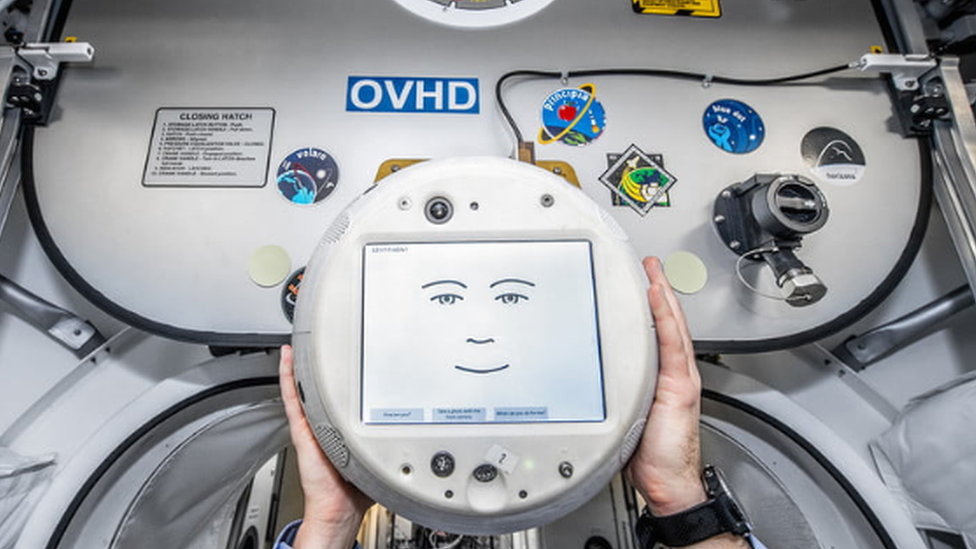Space: Meet CIMON, the AI on the International Space Station!
- Published
- comments

CIMON-2 is the second robot sent to the International Space Station with a friendly face
Meet CIMON-2 the smiley robot helping astronauts in space.
CIMON-2 is an AI or artificial intelligence robot created to help on space crafts. It can help with the day to day tasks in space and can even act as a companion.
It's recently had a big update and has joined astronauts on the International Space Station.
Let's take a look at what it is and what it can do!
So, why a robot?
It can get very busy on a space craft, as you can see CIMON-2 is quite small
There's not a lot of room on the ISS - but there're lots of jobs to do.
CIMON-2 is small and light and won't take up as much room as a human on the spacecraft. It also doesn't need rest or food!
It has been built by Airbus at the German Aerospace Centre and uses IBM artificial intelligence.
On December 5 2019 the US SpaceX CRS-19 mission lifted off from the spaceport at Cape Canaveral, Florida with CIMON-2 on board.
How close to a human is CIMON-2?
CIMON-2 being tested
Well, the robot can listen, and will take voice commands.
It keeps eye contact, and responds to conversations.
In a demonstration before it went to the International Space Station in late December 2019, CIMON-2 told a scientist not to be "mean" when he asked it to turn the music off!
The astronauts, they will be on their own. But with an artificial intelligence, you have instantly all the knowledge of mankind.
The robot has been designed to be able to help the astronauts with navigation and other tasks as well as to provide a friendly face.
Yes! You read that right, a friendly face.
Studies show that demanding tasks are less stressful if they're done in co-operation with a colleague."
It can also give "human based" responses, like nodding and shaking its head!
CIMON-2 can also understand abbreviations - for example, if an astronaut said "affirm" instead of "affirmative" CIMON-2 would understand it.
What features does CIMON-2 have?
CIMON-2 has been designed to have a friendly face
Hopefully, CIMON will stay there and help many astronauts in their tasks at the ISS.
As well as being able to give and recognise emotional responses, CIMON-2 can also give astronauts access to hands-free documents, explain instructions and assist the onboard team with any info they may need.
The robot has eight microphones and it's thought it will use them to learn more about human communications and will develop more and more.
What do you think about the new passenger? Do you think robots with emotions are a good idea for the future? Let us know in the comments.
- Published12 November 2018
- Published19 September 2018
- Published8 January 2020
